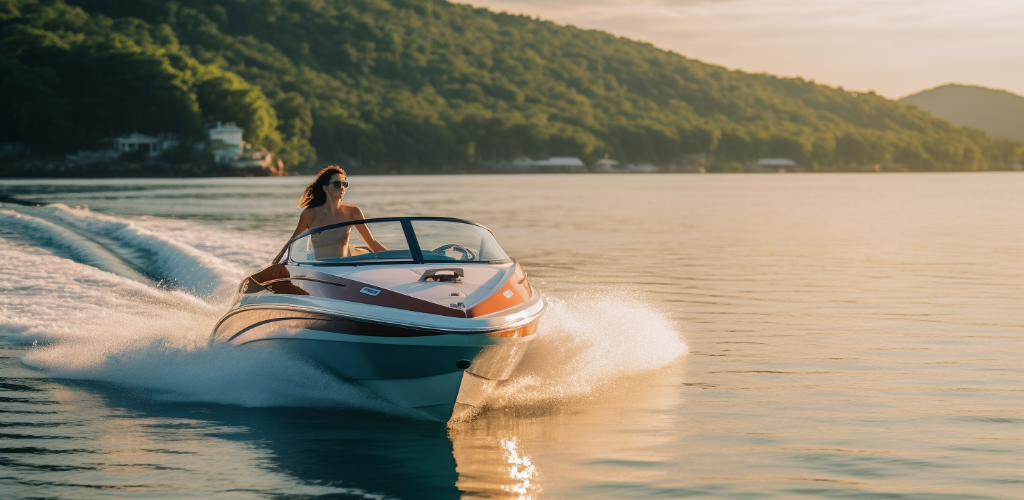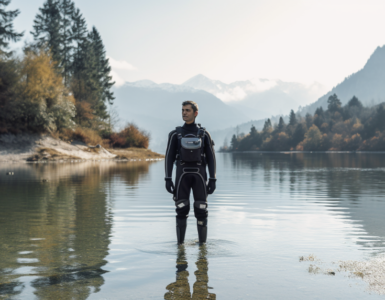Water skiing, an exhilarating blend of speed, skill, and water, is a popular water sport enjoyed by many. Whether you’re a seasoned skier or a beginner dipping your toes into the water for the first time, the thrill of gliding across the water’s surface is unmatched. But have you ever thought about the person behind the wheel of the boat? The one who pulls the skier? It’s a role that requires understanding, skill, and technique to ensure not only an exciting ride but also a safe one.
The Basics of Water Skiing
Water skiing is a surface water sport where an individual is pulled behind a boat or a cable ski installation over a body of water. It’s a sport that combines elements of speed and excitement, along with a dash of daring. Water skiing can be enjoyed in a variety of ways, with skiers often using two skis, a single ski (slalom), or even performing tricks on specially designed trick skis.
Of course, to enjoy any of these types of water skiing, you’ll need the right equipment. This includes a boat or cable system, a tow rope, skis, and a life jacket. Remember, no matter how skilled you are, safety should never be compromised.
The Role of the Boat Driver in Water Skiing
When we think of water skiing, we often picture the skier, but the role of the boat driver is equally, if not more, crucial in this sport. The boat driver’s responsibilities extend beyond just driving. They control the speed, the course, and are responsible for the skier’s safety.
The boat driver’s actions can significantly influence the skier’s performance and safety. A sudden acceleration or abrupt turn can unsettle the skier and potentially lead to accidents. Hence, understanding the correct techniques of pulling a skier, maintaining the right speed and course, and ensuring smooth turns are all part of the boat driver’s role. Ever thought about how much responsibility lies in the hands of the person behind the wheel?
Preparing to Pull a Water Skier
Water skiing is a thrilling activity, but it’s also one that needs careful preparation. To ensure optimum safety and fun, there are crucial steps that need to be taken before pulling a water skier. This includes ensuring all equipment is functioning correctly and that all safety measures are in place. Isn’t it better to be safe and prepared, rather than sorry?
Checking the Equipment
The importance of inspecting the boat, rope, and skis before starting can’t be overstated. The boat should be in good working condition, with enough fuel for the activity. The rope used for pulling the skier should be strong and without any damage. The skis should be well-maintained and suitable for the skier’s skill level. Checking these things not only ensures a smooth skiing experience but also prevents potential accidents. Remember, safety first!
Understanding the Signals
Effective communication between the skier and driver is key for a successful water skiing experience. This is primarily achieved through hand signals. For example, a thumbs up from the skier usually means to speed up, while a thumbs down means to slow down. A pat on the head indicates that the skier is done and wants to stop. These signals are universal in the water skiing community and are vital for the skier’s safety and enjoyment. Who knew that a simple thumbs up could mean so much on the water, right?
Fundamentals of Boat Handling
Driving a boat for water skiing requires a different set of skills than just regular boating. The boat driver plays a key role in the skier’s experience, and understanding the basics of boat handling is crucial.
First and foremost, the takeoff should be smooth. A sudden or jerky takeoff can cause the skier to lose balance and fall. It’s all about easing into the throttle and gradually increasing the speed. This isn’t a drag race, it’s all about the graceful glide!
Maintaining a consistent speed is also important. This allows the skier to comfortably stay on the skis and enjoy the ride. And when it comes to turning, wide turns are preferred. Sharp or sudden turns can be dangerous as they put too much pressure on the skier. Just imagine trying to stand on one leg while someone pulls the rug from under you – not very pleasant, is it?
| Boat Type | Pros | Cons | Best Suited For |
|---|---|---|---|
| Outboard Boats | Low cost, Easy to maintain | Lack of speed control | Beginners |
| Inboard Boats | Superior speed control, Smooth wake | Expensive, High maintenance | Intermediate to Advanced skiers |
| Jet Boats | High speed, Good maneuverability | Not suitable for slalom skiing | Wakeboarding, Trick skiing |
The Takeoff and Pulling Technique
Ever wondered how to smoothly start pulling a water skier? It’s not as complicated as you might think, but it does require some practice. The key to a successful takeoff is smooth and gradual acceleration. Why is that important, you might ask? It’s simple – sudden acceleration can throw off the skier’s balance, potentially leading to a fall, which is neither safe nor fun.
As the boat driver, your job is to start the boat moving slowly until the rope is tight. Then, increase the speed gradually until the skier signals that they are comfortable. Remember, communication between skier and driver is crucial for a successful takeoff.
Maintaining the Right Speed and Course
Now that you’ve mastered the takeoff, let’s talk about maintaining the right speed and course. This part is crucial for the skier’s performance and safety. But how do you know what the ‘right’ speed and course are?
Well, it depends on the skier’s skill level and the type of skiing. For example, beginners usually ski at slower speeds, while advanced skiers can handle higher speeds. Similarly, slalom skiing requires a straight course, while trick skiing allows for more course variations.
As the driver, your job is to consistently maintain the speed and course that best suit the skier’s needs. It might be challenging at first, but with practice, you’ll get the hang of it. So, are you ready to hit the water and pull a skier like a pro?
Turning While Pulling a Water Skier
Turning a boat while pulling a water skier isn’t as simple as it appears. It requires a good deal of finesse and understanding of the skier’s balance. Why? Because making a sudden or tight turn can put too much pressure on the skier, potentially causing them to lose control or fall.
So, how can you ensure smooth and wide turns? The key is to make gradual turns. This doesn’t mean you should turn the boat slowly, but rather, you should avoid sharp turns. Remember, the skier is not only dealing with the pull of the boat but also the force of the water. Your job as a driver is to make the ride as smooth and predictable as possible.
- Always signal before you turn.
- Begin your turns slowly and gradually increase the turn radius.
- Keep an eye on the skier’s body language to gauge their comfort level during turns.
- Avoid turning at high speeds.
Tips for Troubleshooting Common Issues
Water skiing is a dynamic sport, and issues can occasionally arise when pulling a skier. But don’t worry! Most of these issues have simple solutions. Let’s go through some of the most common problems and how to troubleshoot them:
Issue: The skier is struggling to stay upright during takeoff. Solution: Check if the acceleration is too quick. The takeoff should be smooth and gradual to allow the skier to find their balance.
Issue: The skier keeps falling during turns. Solution: Ensure the turns are wide and gradual. Sharp turns can be difficult for the skier to handle, especially beginners.
Advanced Boat Driving Skills for Pulling a Water Skier
So, you’ve mastered the basics of pulling a water skier and are ready to take on some advanced techniques? Fantastic! Let’s explore a few skills that can enhance your boat driving and make the skiing experience even more thrilling for the skier.
Dealing with choppy water can be a challenge for both the driver and the skier. As a driver, your job is to navigate the waves in a way that minimizes their impact on the skier. This usually means maintaining a steady speed and trying to keep the boat at a constant angle to the waves.
Pulling multiple skiers requires even more attention and skill. You need to keep an eye on all skiers and adjust your driving based on their combined skill level. Remember, safety always comes first!
- Water Skiing Schools: These institutions offer comprehensive courses on water skiing, including how to pull a skier.
- Online Tutorials: There are many online resources where you can learn more about water skiing techniques. They offer videos and step-by-step guides.
- Books about Water Skiing: These can provide in-depth knowledge about the sport, including the history, techniques, and tips for both skiers and drivers.




